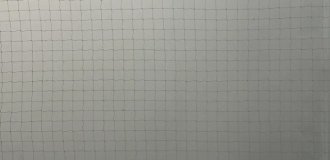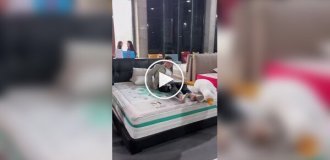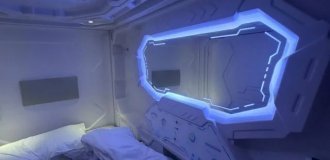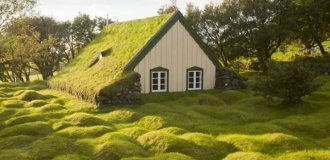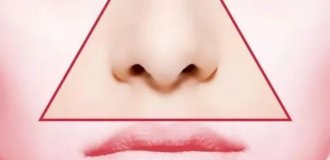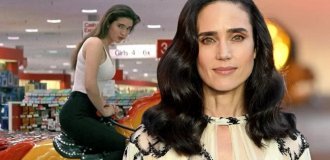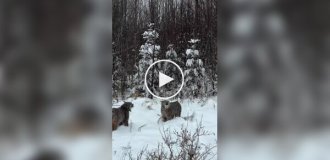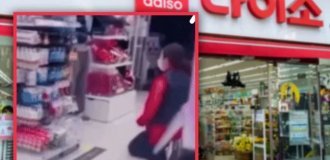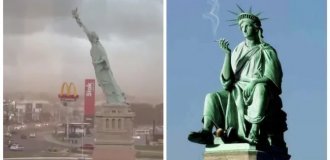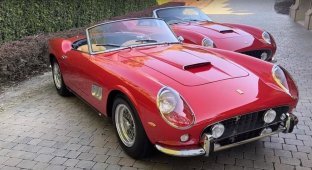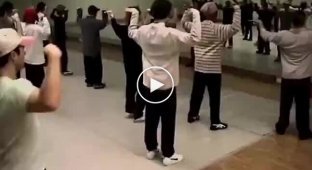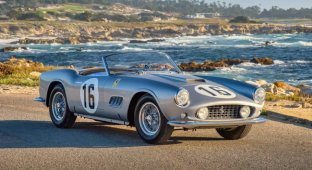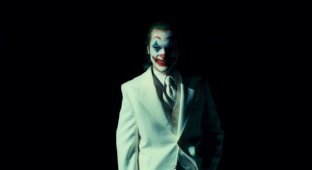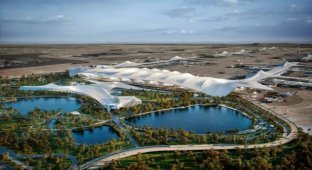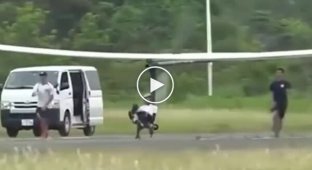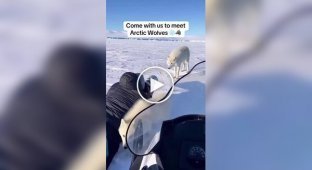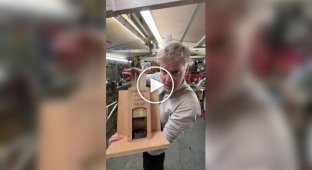A selection of photos from the past that will surprise you (21 photos)
An exclusive collection of historical photographs brought to life through digital coloring reveals the amazing world of the past. These photos, taken in different decades of the 20th century around the world, not only recreate the atmosphere of the era, but also give a dose of humor and surprise. 
The world's first nuclear submarine, the Nautilus, arrived in New York Harbor in May 1956. 
Skier Dick Brown jumps over his car. Lassen County, California, 1940.
Lassen County, California, and especially the Lassen Peak area (an active volcano in the national park) is famous for its incredible snowfalls. Such mounds of snow can be seen in this place not only in winter, but also in summer. 
The famous American acrobat, attached to a flying airship by a rope at an altitude of 1000 meters. 
A 17-year-old boy with his Italian Vespa scooter. England, 1983. 
An unusual way to transport a dog. Paris, 1920s. 
Robots, called psychotrons by their Austrian inventor Klaus Scholz, one of them hands a cup of tea to Frau Schulz, circa 1950 in Vienna.
The two robots shown here were invented by Viennese engineer Klaus Scholz. They can answer the telephone, open doors, vacuum floors, shake hands, introduce themselves and pour liquids from one container to another without spilling a drop. 
Graham and Barbara Brown carry their daughters Rosaleen and Susan, aged 17 days and 19 months, as they climb to the summit of Mount Ogwen in Snowdonia, Wales, 1962. 
A nun shoots a gun. USA, 1963. From the source: Once a year, the nuns of Bergen County, New Jersey, are given the opportunity to see and participate in the Scouting movement. At the retreat, sponsored by the North Bergen Catholic Scout Committee and the Boy Scouts of America, the sisters participated in various events and visited Scouting exhibits. For the nuns, it was a day of fun. 
Photographer: David McLane
A couple riding together on an autoped, 1923.
The first prototypes of autopeds appeared in the late 19th century, but mass production began in the 1900s.
The goal of creation: to offer inexpensive and accessible transportation to the general population. At that time, cars were very expensive, and an autoped cost 2-3 times less. 
Polish wrestlers, participants of the Moscow Olympics in 1980. Jan Sandurski (left) and Adam Falandis.
These days, older athletes have repeated this famous photo. 
Library shelving, 1955. The Cincinnati Public Library, designed by architect James W. McLaughlin, opened in 1874. Cincinnati, Ohio.
A pair of ostriches harnessed to a cart on an ostrich farm, Los Angeles, 1900.
In the late 19th - early 20th centuries, ostrich feathers were extremely popular in fashion, especially for women's hats. In the 1890s, ostrich farms began to actively develop in the United States to meet European demand. By 1910, there were over 1,000 farms in California, Texas, and Florida, housing about 50,000 ostriches.
Some entrepreneurs, frustrated by the high cost of keeping the birds (one ostrich cost up to $1,000 in the 1910s, equivalent to about $30,000 today), began looking for additional ways to monetize them. The idea arose to use ostriches not only for their feathers, but also as a means of transportation, emulating the tradition of using horses and camels. 
Dangerous Sports Club cross-country skiing. St. Moritz, Switzerland, 1983. 
A child in Oudtshoorn, Cape Province, South Africa, sits on a pile of ostrich eggs, 1939. 
Police watch anxiously as a pair of aliens casually stroll down Regent Street, London, 1964.
The Martians are actually a troupe of actors dressed for their roles in the show "Man on the Moon" at the London Palladium. 
Photographer: Chris Ware
A woman in an "electric bath" at the Institute of Light Care, 1900. The electric bath, probably the forerunner of the modern solarium, was used for therapeutic purposes.
The voltage there reached 50,000 volts. The patient was securely isolated on a dielectric bed, lying between the plates of a charged capacitor. The therapeutic effect was noted. It had a positive effect on blood circulation, the movement of solutions in tissues, a slight warmth was felt, sweating increased. In general, it had a positive and relaxing effect. But of course she didn't treat any serious illnesses, just as a fashionable and expensive vacation. 
Photographer: Reinhold Thiele
A circus performer teaches a zebra to stand on its hind legs, 1920.
Zebras are trainable, but their potential is limited by their wild instincts and need for a calm environment. Successful training is possible with gentle methods, patience, and an understanding of animal behavior. In modern conditions, training is more often carried out in zoos and shelters to ensure the comfort of the zebras and the safety of the staff. 
Sedan nuclear explosion crater, 1960s, Nevada The largest man-made crater in the United States.
The Sedan explosion was part of Project Plowshare, which investigated the possibility of using nuclear explosions for peaceful purposes, such as building canals, deepening harbors, or extracting minerals.
On July 6, 1962, an explosive device was lowered into a borehole drilled 194 m deep. The explosion had the power of 104 kilotons of TNT, and raised a dome of earth 90 m above the desert. More than 11 million tons of soil were ejected. The explosion created a crater 100 m deep and about 390 m in diameter. 
The most secure safe in a bank, 1920. 
Wrestler Mildred Burke files her nails while holding back a journalist, 1947.
Mildred Burke was born May 12, 1914, in Newark, New Jersey. She began wrestling as a young girl and transitioned to professional wrestling in the 1930s, becoming one of the first women to achieve success in the industry.
A movie about her was released that year: Queen of the Ring. 

